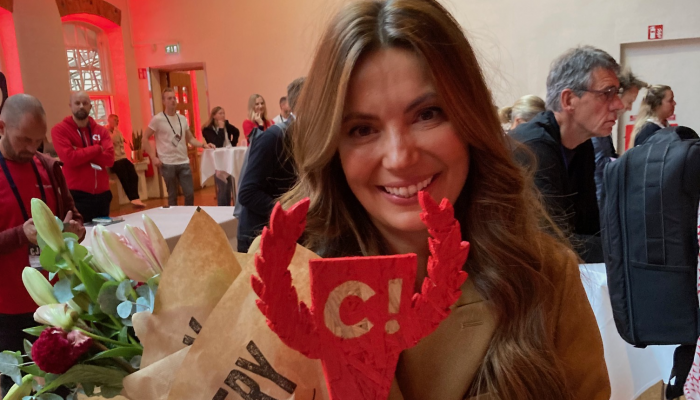This blogpost is about the factors and drivers we think leads and enables growth by experimentation. Some companies do their tool investments and think that the rest will work itself out. As Conversionista has been in the business of CRO since 2010 we have worked with a wide range of businesses in the Nordics. Having set up and driving experiment programs forward in almost thousands of projects (humble brag) made us map out success factors and create a framework to work and lead by. A framework containing the factors that your business needs in order to reach sustainable digital (and data-driven) growth.
Starting and restarting teams and roles with clients makes you humble and respectful for the fact that we often try to change the focus of a team and company towards being more datadriven, the ambition itself is quite vague and means different things in different companies. To us at Conversionista it means that you act on the insights, evaluate and validate based on the knowledge you gather, and measure towards business goals.
1. Focus
2. Process
3. Organization
4. Culture
5. Tools
In this blog post we will guide you through the different areas 1 to 5, and tell you why more tools is not the single key to set up a lean mean optimization machine.
Focus – What goals do you have to support your tools?
The investment is done and you (or someone in the team) is shouting out “This is the start of the datadrivennez!” when implementing the best-on-the-market tools in the last sprint. Yep, you are done. Or, are you?
What is the purpose of the implementation and how do you measure for it? Creating effectiveness and focus both for you and your organization is to ask yourself: what will it measure, what questions are we able to ask the data sources and how do we set up the goals for the insights. We often use a framework from Avinash Kaushik to start looking at business goals and the connection to your digital goals. They are not the same metrics since you are not able to measure for behaviour in your budgeting but in your web analytics tools. The difference is big and the different approaches are unique as well, using business insights together with behavioural insights is a key factor to work with your data from different angles. But to keep it simple its about to get your user to see, think, do and care about your products and services. Using a simple but effective framework setup by Avinash Kaushik set measurement plans from the what the user should see, think, do (or act) and care about. This grouping will help you to look at your business from branding, campaigns, conversions and retention. This will enable you to group your work and drill down in the different areas to find measurements to follow-up on.
Read more about Avinash Kaushiks measurement plan here
Always try to keep the goals down in numbers and complexity. Strive towards goals being SMART – Specific, Measurable, Attainable, Realistic and Timely. Meaning that it’s not only about sticking your finger in the air and coming up with a number. A great way to get going is by using this MIRO-template together with your team.
Read more about smart goals here

Process – How does your tools support your ways of working?
Your process is something that you need to document and iterate on in order to be able to create repetitive success. Our way of working with the optimzation wheel is a model that could be read here. Regardless of what toolbox and traffic volume you have on your site, the basis is that you should gain insights, apply web psychology, hypothesize using the two, prioritise experiment to create new learnings. Consider how it is coherent with your dev-teams and design-sprints – its valuable to support others with experimentations this will enable more collaborations and curiousity to your expertise.
«You could run experimentation basically in any shape or form, but the need for a clear goal and expectation is what makes it happen.»
Working together with UX and dev-teams will make you go further in your hypothesis and experiments, help you avoiding pitfalls both when challenging design-conventions and avoiding overcomplicating coding experiments.
Most often it takes a halt when it comes to other teams, take a minute to think about which teams that you need to include and which ones is nice to include at first, start small and setup feedback sessions such as retros to iterate and feedback on your work.
Organisation – How does your competence and organisation support your new tool ventures?
Are you also thinking (oh shit this is a big one) it is right – invest in new capabilities and does your organisation need tweaks along the way. Anyhow your tools need “handymen” to put them to work, together with an organisation to utilize the value.

We divide this in two because its (as I see it) two separate thing a person can have the competence of gathering insights and testing but is not utilising it because its not an outspoken expectation on this person or team. You could run experimentation basically in any shape or form, but the need for a clear goal and expectation is what makes it happen. If you are thinking about someone that has the interest and passion for optimization, start by discussing setups and ways of working, If you have a role or a team that is working with experiments at the moment, think about how this could scale in other teams and what competencies is key as a success-factor.
Much of what I mean I the description can be applied by using agile methodologies. There’s a lot written and discussed about how to put agile methods to work, think of these two links as a starting point. Make reflections on your way of working with this one.
Read more about the agile manifesto here
Then read this article to go more in depth with what it might mean for your business. The indepth article click here
But what about our CULTURE – is it really suitable for our new tools? 🙂
Cultural change is the final boss when it comes to scaling up growth through experimentation. This is something that everyone is aiming for, being the Amazon or Booking.com having user behaviour and experimentation at the core of the company. Rarely this can be done from a small frontrunner team in the organization. Think about what a cultural change is for you and your company. What is your version of being datadriven and what milestones could you identify on your journey? An obvious champagne popping event would be the first experiment, the first learning and the first experiment with an uplift. Celebrate, encourage discussions with the company, discuss why the experiments you run will lead to growth and what metrics are suitable for validating the results. Be open and dare to fail and learn along the way. This is something that experimentation is awesome at. This sparks curiosity and change. But first: check your toolbox and look for the people in the organisation that could be a part of this journey. Then go get yourself a bottle of champagne.
https://miro.com/miroverse/the-team-canvas/
When that is done – some helpful ways of start working with your team would be to look into creating a team-canvas together with reflecting and learning together. I personally like Alex Ivanovs teamcanvas to set a direction and get things moving. It’s something that I can revisit with the team to remind us of where we are heading.
To spark new ways of working and team exercises I love the Hyper Island toolbox full of easy to use recipe-like ways of getting teams unstuck.
https://toolbox.hyperisland.com/
Bring these questions to reflect on for you and your teams:
1 – Are my tools sufficient to cover the research questions of WHAT, HOW and WHY its happening?
2 – Do we have clear roles and expectations within my team to drive experimentation?
3 – What culture do I drive in order to increase the speed of learning?
4 – How does the experimentation program reflect our company goals and KPIs?
5 – What repeating process or workflow do I have to support working towards my goals and KPI´s?Add blockAdd block
This is of course a short and simplified story and has the purpose of raising important questions to succeed in creating speed, quality and functional teams. It takes grit and openness to succeed in changing or adding new sets of tools so be patient and humble on the way. Me and my advisory colleagues are more than happy to discuss more about leading and enabling change within your team – feel free to reach out.
Take care and always be converting <3
*Here are my contact details👉 [email protected]


